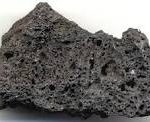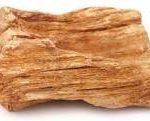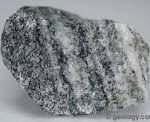TYPE OF ROCKS – PROPERTIES & EXAMPLES
INTRODUCTION
Rocks are mixture of minerals which forms outer solid layer of the earth, called crust. A rock is naturally occurring solid aggregates of minerals.
Minerals are naturally occurring substances having definite chemical composition and physical features e.g. Quartz (SiO2).
- Most rocks contain silicate minerals, compounds that include silicon oxide tetrahedral in their crystal lattice, and constitute about one-third of all known mineral species and about 95% of the earth’s crust. Therefore, the proportion of silica in rocks and minerals is a major factor to determine their names and properties.
- Generally Rocks are classified according to characteristics such as mineral and chemical composition, permeability, texture and size of the constituent particles. Over the course of time, rocks can transform from one type into another, known as rock-cycle.
TYPE OF ROCKS
Depending upon the mode of formation, rocks are classified into three main classes-
IGNEOUS ROCK
- Igneous rock (Latin word ignis meaning fire) is formed through the cooling and solidification of magma or lava. The original molten material solidified and thus forms igneous rock e.g. granite, basalt, diorite, gabbro, syenite, granodiorite, peridotite etc.
- Furthermore, according to the mode of formation igneous rock is grouped into two categories-

Plutonic Rock- such rocks are formed inside the earth by solidification of magma and magma cool and crystallize slowly within the Earth’s crust. Later pushed to the surface by various earth movements. Example– granite.
Volcanic Rock- the cooling of lava takes place on the surface of earth and the solidified material is called volcanic rock. Generally glassy in structure e.g. basalt.
About 65% of the Earth’s crust by volume consists of igneous rocks, making it the most plentiful rock category. Of these, 66% are basalt and gabbro, while 16% are granite, and 17% are granodiorite and diorite. The oceanic crust is 99% basalt, which is an igneous rock of mafic composition.
SEDIMENTARY ROCK
- Such rocks are formed by the accumulation and consolidation of fragmentary rock materials. Hence these are the secondary formation of igneous rock.
- Before being deposited, sediments are formed by weathering of earlier rocks by erosion in a source area and then transported to the place of deposition by water, wind, ice, mass movement or glaciers.

- About 7.9% of the crust by volume is composed of sedimentary rocks, with 82% of those being shales, while the remainder consists of limestone (6%), sandstone and arkoses (12%).
Such rocks often contain fossils. - Sedimentary rocks cover about 4/5th of rocks visible on the surface of the earth; despite they may not constitute more than 5% of the total bulk.
Examples are limestone, sandstone, shale, conglomerate etc.
METAMORPHIC ROCKS
- Such rocks are formed from the igneous rock or sedimentary rock or another older metamorphic rocks by the action of intense heat and high pressure or both resulting in considerable change in the texture and mineral composition. This process is known as metamorphism meaning to “change in form”.

- Metamorphic rocks compose 27.4% of the crust by volume. Example– gneiss from granite, quartzite from quartz or sandstone, marble from limestone and slate from shale.
Read more..
WHAT IS WEATHERING- TYPES & PROCESS
FORMATION OF SOIL-PROCESS & FACTOR OF SOIL FORMATION
SOIL STRUCTURE-DEFINITION,TYPES & IMPACT
SOIL PROFILE- DIFFERENT HORIZONS
SOIL TEXTURE- CLASSIFICATION & INFLUENCE
DIFFERENCE BETWEEN MANURE AND FERTILIZERS
TYPES OF FARMERS-GOVERNMENT INITIATIVES
WHAT IS SOIL EROSION- TYPES & MECHANISM